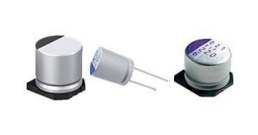
In the electronic component industry, solid polymer electrolytic capacitors are a highly regarded key component. This article will introduce the working principle, characteristics, and applications of solid polymer electrolytic capacitors in electronic devices.
Ⅰ. What are solid polymer electrolytic capacitors?
Solid polymer electrolytic capacitors are high-performance capacitors widely used in the electronic component industry. They utilize a solid-state polymer electrolyte and offer several advantages such as high temperature stability, long lifespan, low ESR (equivalent series resistance), small size, and environmental friendliness.
Ⅱ. Working principle
Solid polymer electrolytic capacitors are electronic components used for storing and releasing charge. They consist of a solid polymer electrolyte layer between two electrodes (anode and cathode). When voltage is applied to the capacitor, ions within the electrolyte layer start to move, creating an electric field. This electric field allows the capacitor to store charge and release it when needed.
Ⅲ. Characteristics
Solid polymer electrolytic capacitors have several advantages over traditional liquid electrolytic capacitors. Here are some key characteristics:
l High temperature stability: Solid polymer electrolytic capacitors can operate in high-temperature environments without losing performance or being damaged.
l Long lifespan: Due to their solid structure, solid polymer electrolytic capacitors have a longer lifespan compared to traditional capacitors.
l Low ESR: Solid polymer electrolytic capacitors have lower equivalent series resistance (ESR), meaning they can handle high-frequency signals more effectively.
l Small size: Solid polymer electrolytic capacitors are relatively compact, making them suitable for compact electronic devices.
l Environmental friendliness: Compared to traditional liquid electrolytic capacitors, solid polymer electrolytic capacitors do not contain harmful substances, making them more environmentally friendly.
Ⅳ. Applications
Solid polymer electrolytic capacitors have a wide range of applications in electronic devices. Here are some common application areas:
l Mobile devices: Solid polymer electrolytic capacitors are suitable for mobile devices such as smartphones, tablets, and portable audio devices. For example, the SP-CAP (Solid Polymer Capacitor) in Apple's iPhone 12 series smartphones. These capacitors offer small size, high energy density, and low ESR, providing stable power supply to support high-performance processors and high-definition screens.
l Power systems: Solid polymer electrolytic capacitors play a crucial role in power systems, such as the SP-CAP in Dell's XPS 13 series laptops. These capacitors have low ESR and high temperature stability, ensuring stable power output for the proper functioning of devices.
l Communication devices: Solid polymer electrolytic capacitors are widely used in wireless communication devices, network equipment, and satellite communication devices. For example, the SP-CAP in Huawei's BBU5900 base station. These capacitors provide efficient power management, supporting high-speed data transmission and stable communication signals.
l Industrial electronics: Solid polymer electrolytic capacitors play an important role in industrial automation, robotics, and electric vehicles. For instance, the SP-CAP in Siemens' PLC (Programmable Logic Controller). These capacitors have a long lifespan and high temperature stability, enabling them to operate reliably in harsh industrial environments.
Ⅴ. Conclusion
Solid polymer electrolytic capacitors are key components that receive significant attention in the electronic component industry. Their working principle, characteristics, and application areas make them an indispensable part of modern electronic devices.




